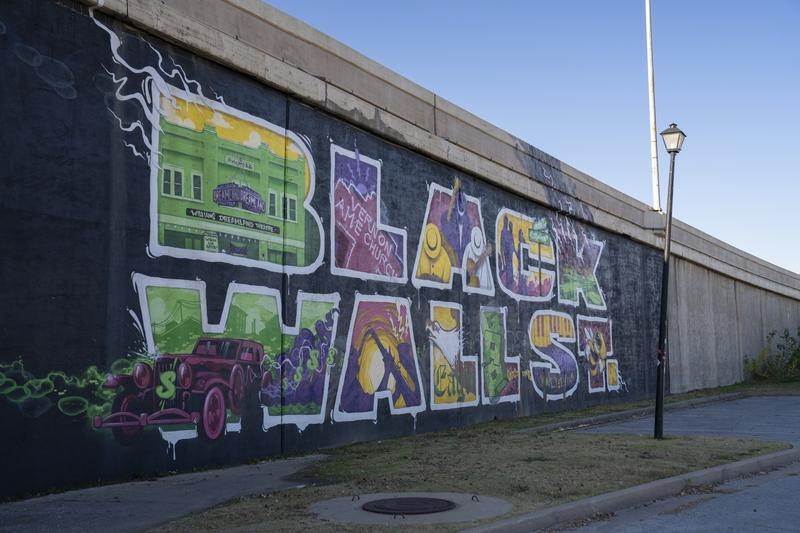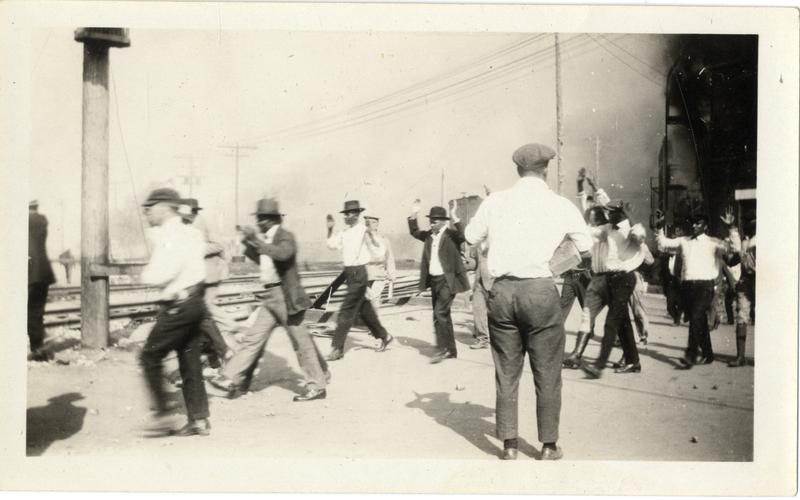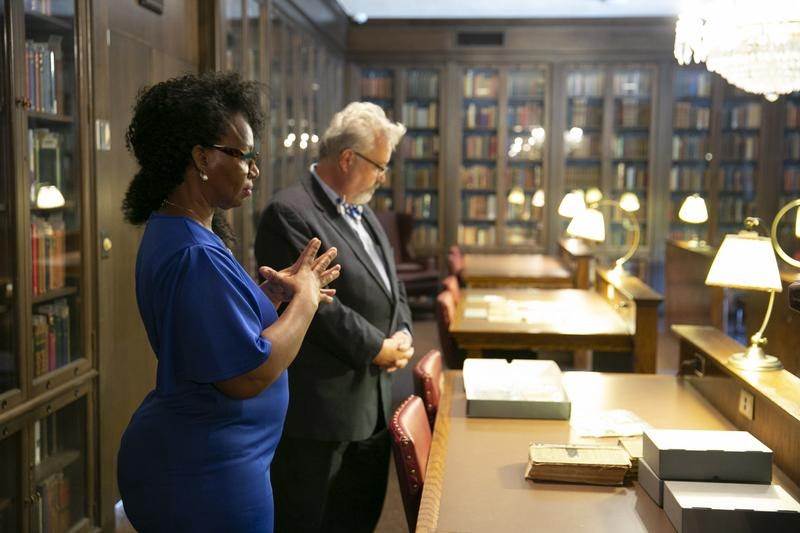Beyond Tulsa: The Team Behind “Rise Again: Tulsa and the Red Summer” Share Why These Stories Are Important to Tell
In honor of Juneteenth and the 100th anniversary of the Tulsa Massacre, National Geographic Documentary Films premiered Rise Again: Tulsa and the Red Summer. Directed by Dawn Porter and featuring journalist DeNeen L. Brown, the film takes a look at the events leading up to the Tulsa Massacre and takes a closer look at the times we’re living in to see how much has really changed. During a special premiere event, Dawn Porter and DeNeen L. Brown joined New York Times bestselling author Roxane Gay for an engaging conversation about why making this film was so important.

(National Geographic/Christopher Creese)
“My people are from Oklahoma and so my ancestors are from Oklahoma,” DeNeen explained about why she initially started investigating the 1921 destruction of the Greenwood district of Tulsa. Her father built a church in what used to be Greenwood and while visiting him in 2018, she suddenly felt surrounded by Black history. She was already writing stories about Black history for The Washington Post and realized doing a story on Black Wall Street would be a good addition. “I look around and I notice that there’s a minor league baseball stadium, there’s a yoga studio, a yogurt shop and having lived and worked in D.C., there were all the signs of gentrification.” When she approached her editor about what she observed, she was sent back to spend time with local activists who have been fighting for preserving Greenwood as a Black neighborhood. She got to walk through the same streets with her hands on her head the same way survivors were marched to concentration camps, helping her feel more connected to the story.
Rise Again: Tulsa and the Red Summer isn’t Dawn Porter’s first film about the Tulsa Massacre, having produced a short film about it for the Smithsonian. “National Geographic called and asked if I would be interested in working on this.” She was attracted to not only working with DeNeen, but celebrating her hero, Ida B. Wells. But what makes the narrative of Rise Again different is that it showcases that what happened in Tulsa wasn’t an anomaly, but just one event in a campaign of racial hatred leading up to it.

(University of Tulsa, McFarlin Library)
The film gave DeNeen more time to explore these stories, having previously been working on tight deadlines. Pulling together newspaper coverage of events and analyzing the way the mainstream media reported on them compared to the few Black newspapers at the time has brought her closer to the truth. In the film, she interviews the few remaining survivors, as well as their descendents who remember their ancestors' stories well. One of the really powerful stories that emerges is from Elaine, Arkansas, a rural area where Black people owned cotton farms and with the price of cotton on the rise, they were about to come into a lot of money. News stories about a “Black uprising” fanned the flames. “Elaine is a powerful moment in this narrative because it happens in a rural area where many of the black people lived a hundred acres from each other.” Throughout the Red Summer that preceeded the Tulsa Massacre, a trend emerged: A false accusation, often printed in newspapers, was enough to cause a white mob to form.
“One of the things that I wanted to emphasize that just floored me was that the motivation for this wasn’t only that a black man touched a white woman, but it was envy, it was economic envy,” Dawn shared about the Tulsa Massacre specifically. With many affluent and wealthy Black businesses making Greenwood thrive and coining the nickname “Black Wall Street,” the massacre not only uprooted the lives, but the livelihoods of its residents. “The other story, the other piece of this is, look what we were doing just a few decades out of slavery. That is remarkable, that is Wakanda… I’m descended from people who came out of slavery to owning oil wells and banks… That idea of a prosperous community was too much to bear. When we think about the backlash against Black people today, I’m looking for those motivations as well.”

(National Geographic/Lisa Henden)
“I want people to know the history, what we call American HIstory,” DeNeen shared about the importance of telling these stories. “I want people to know that these massacres actually happened, what we call the Red Summer… You can’t gaslight us or wash it out of the history books or textbooks.” She hopes seeing the film inspires viewers to expand their research of the subject. “It would be my hope, my personal hope, that members of the audience would leave the film and then do their own personal research and study and educate themselves about the history that happened in the United States, but also other places, and perhaps they could become anti-racist.” She also shared a great analogy for increasing a person’s desire to learn more about what it feels like to be targeted based on your ethnicity. “We all should seek an understanding of the pain of racism as though we were seeking water in a hot desert. It’s something that your very life depends on.”
While Rise Again: Tulsa and the Red Summer reminds viewers that we still have a long way to go towards making real, lasting change, Dawn Porter does see hope. “When George Floyd was murdered, I saw something I didn’t think I’d ever see.” She was touched by the diversity of the protests and marches. “I feel like the reason for that is that we had a common understanding, it happened right before our eyes.” Like George Floyd’s murder, she hopes this film gives people a common understanding of the pain and anguish felt by the victims of these massacres and their descendants. “I can understand people’s rage and also fear if I have a deeper understanding of this history.” As sad as the story is, she also hopes viewers vocus on the accomplishments of Black Americans outlined in the film.
Rise Again: Tulsa and the Red Summer is now streaming on Hulu, with repeat viewings on National Geographic.
